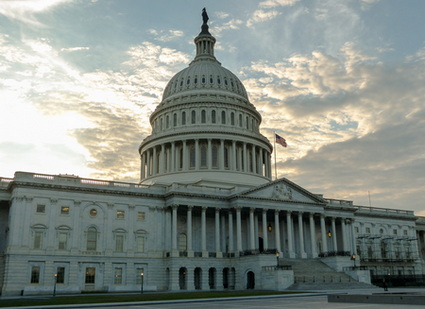
House Republicans this week proposed the Limit, Save, Grow Act to cut federal spending and spur negotiations to raise the nation’s $31.4 trillion debt ceiling for approximately one year. President Joe Biden and Senate Democrats oppose the bill and propose lifting the debt ceiling without conditions. (The Hill, April 19 and Committee for a Responsible Federal Budget, April 20)
X Date Approaches
Congressional Hearings
The importance of the nation’s supply chains to the economy was also addressed when Commerce Secretary Gina Raimondo testified before a House appropriations panel this week on the department's 2024 budget. Secretary Raimondo will discuss national economic conditions during The Roundtable’s Spring Meeting next week in Washington. (Roundtable-level members only)
# # #

On Tuesday, the White House Office of Personnel Management (OPM) announced that it is ending its “maximum telework” directive to federal agencies.
Federal Workforce and Telework
Roundtable Letters 
Low Office Occupancy Persists 
The impact of return-to-the office on the industry, communities, and the economy will be a focus of discussion during The Roundtable’s April 24-25 Spring Meeting in Washington, DC. (Roundtable-level members only).
# # #

The Department of Energy (DOE) this week presented its latest data on energy use in U.S. commercial buildings. The nationwide information released by DOE’s Energy Information Administration (EIA) is the basis for ENERGY STAR building scores from the Environmental Protection Agency (EPA). (EIA final results and reports)
CBECS Results
ENERGY STAR & NextGen Label
The Real Estate Roundtable submitted comments to EPA last month on the NextGen building label proposal. (Roundtable letter and Roundtable Weekly, March 3)
# # #

A federal appeals court on Monday struck a local law that banned natural gas hook-ups to new buildings. (Wall Street Journal, April 17 and AP News, April 18)
State and Local Gas Bans
Impact of Court Ruling

As its next litigation option, the City of Berkeley might ask for a fuller panel of Ninth Circuit judges to uphold its ordinance. The Roundtable will continue to monitor how local natural gas bans and related building performance standards impact federal-level policies that address real estate’s role to help tackle climate change. (Roundtable Weekly, March 3 and Jan. 20)
# # #